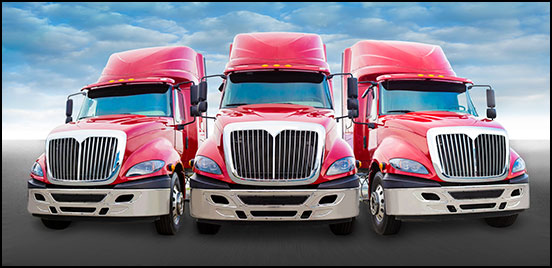MANAGEMENT...

Long-distance Transportation
Eight years of transportation research highlighted.
Long-distance transportation is a facet of the beef industry, and it can be a stressful event for cattle. Karen Schwartzkopf-Genswein, researcher at the Lethbridge Research and Development Centre for Agriculture and Agri-Food Canada, shared highlights of eight years of research on long-distance transportation to attendees of the fifth International Symposium on Beef Cattle Welfare in Manhattan, Kan., June 8-10.
There are many potential stressors in transportation — handling, novel environments, auction, commingling, restrictions of feed and water, environmental condition on the trailer, loading density, energy used to maintain balance during the trip, transport duration and potential for injury. Read more.
Refresh Your Replacements
Recoup value on costly replacement females by making fertility your top priority.
It’s no secret that replacement heifers are some of the most valuable animals in your herd; however, value goes hand in hand with vulnerability. With recent record-high costs to develop replacement females, it may be time to consider a refresh on your replacement heifer program.
“Heifer calves retained in 2014 and 2015 came at the highest cost of development in history, with some estimates at more than $2,200 invested through preg-check,” says N.T. Cosby, cattle nutritionist with Purina Animal Nutrition. “With cattle markets projected to decline over the next few years, it’s especially important for you to recoup value on replacement heifers.”
Follow Cosby’s three tips to help refresh your replacement herd. Read more.
The Right Driver
Driver training materials available and recommended.
For truck drivers charged with the transport of livestock, Ron Gill thinks driver training has been woefully inadequate. Speaking at the International Symposium on Beef Cattle Welfare (ISBCW), hosted June 8-10 in Manhattan, Kan., the Texas A&M extension livestock specialist said it is not because driver training is unavailable. It’s because too few people take advantage of it.
“There is the [Beef Quality Assurance] Master Transporter Program, plus other transportation training and educational material that is available,” said Gill, explaining how drivers can obtain training in the areas of biosecurity, animal handling, loading and unloading, weather-related issues, and truck and trailer maintenance. Read more.

Kris Ringwall
Beef Talk
The first step to lowering costs is knowing the costs.
The movement up or down in beef prices results in many news stories indicating the consequences. The challenge for beef producers is to develop a production system in which expenses are underneath the ever-changing swinging commodity prices while learning to utilize the appropriate financial tools to help minimize risk.
This balance of risk protection as investments mount vs. limiting investment by decreasing expenses is a fundamental split in the beef world. For producers, balancing these two principles is the challenge. At what point do producers quit putting money into the trough vs. trying to make the trough smaller? Read more.
Welfare Research Update
Animal behaviorist highlights what research is telling us
with regard to pain assessment and mitigation.
Understanding better the pain animals may experience and how best to provide relief are the objectives of cattle welfare studies in Canada. During the 2016 International Symposium on Beef Cattle Welfare June 8-10 in Manhattan, Kan., Ed Pajor, professor of animal behavior and welfare at University of Calgary Veterinary Medicine, reported on ongoing research.
Pajor said studies of how age and handling by humans influence pain assessments and mitigation are part of a five-year project involving both beef and dairy cattle. Researchers are assessing pain experienced by animals of different ages and the effects of treatment with anti-inflammatory medication (Meloxicam) administered through different methods. Read more.
Flooring Effects on Welfare and Performance
Space and flooring type studies aim to inform policy.
The European Union (EU) imposes more regulations regarding animal welfare than the United States does, but for beef industries that rely upon export, those regulations are important to follow. Bernadette Earley, principal research officer for the Animal and Bioscience Research Department at the Irish Agriculture and Food Development Authority (Teagasc) Animal & Grassland Research and Innovation Center, said the Irish beef industry exports 72% of its production.
One of the regulations says the minimum space required is 3 meters squared [about 32 feet (ft.) squared] per head for animals expected to reach about 1,100 pounds (lb.), plus or minus half a meter squared (5 ft.) for each 220 lb. expected between 882 lb. and 1,765 lb. [400 kilograms (kg) to 800 kg]. She said there is no clear scientific basis in the literature to justify the plus or minus aspect. Read more.
New Products
Industry affiliates provide a wide array of products and services to assist you on the farm and ranch. Here’s an assortment of new products to hit the market recently.
- Vaccine for BCV
- New white clover released
- Heavy-duty utility tractor
- Angled tines for single-rotor rakes
- Big bales, higher density
Angus Advisor
Click here for November herd management tips from cattle experts across the nation. Advice separated by region.
[Click here to go to the top of the page.]






